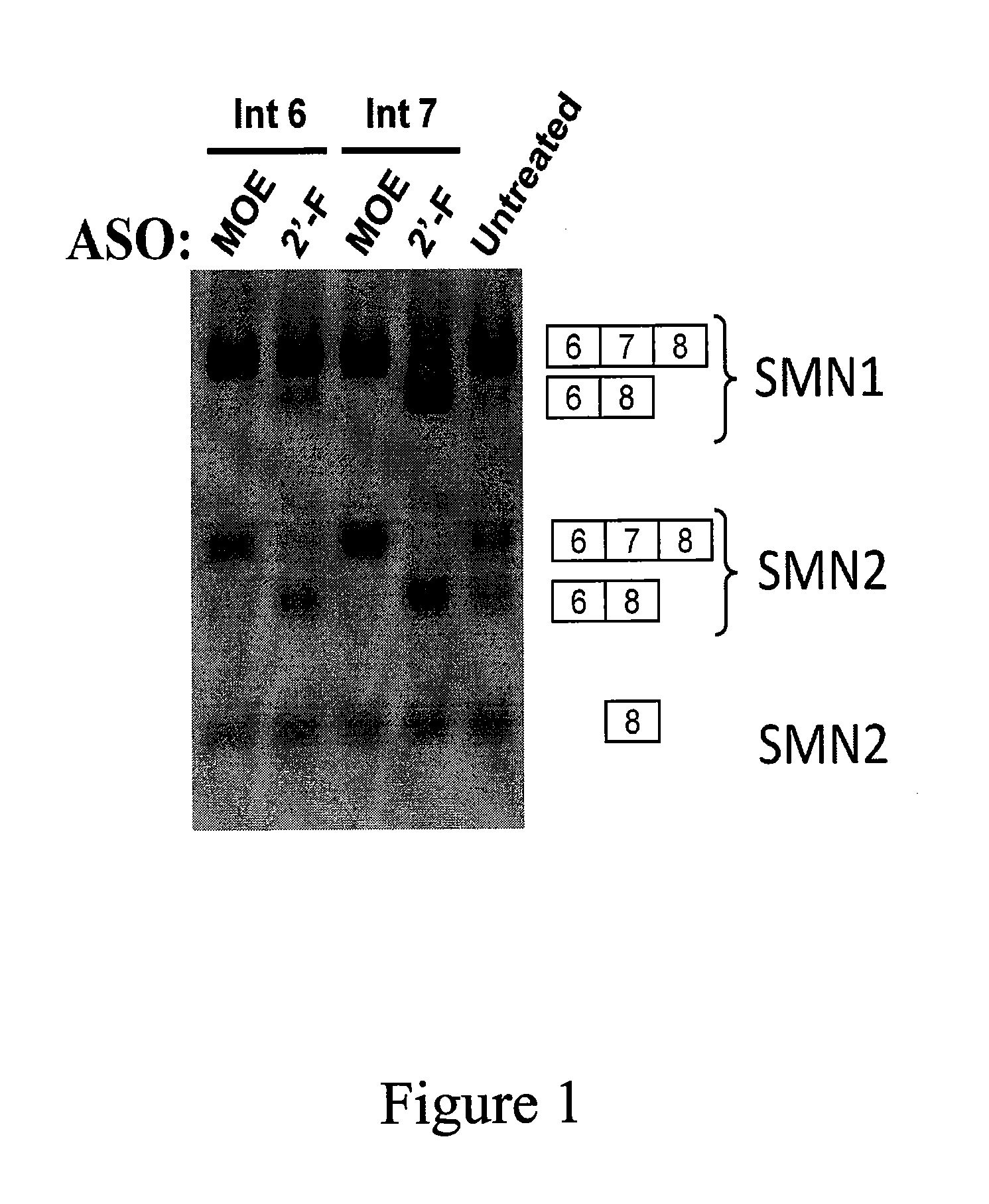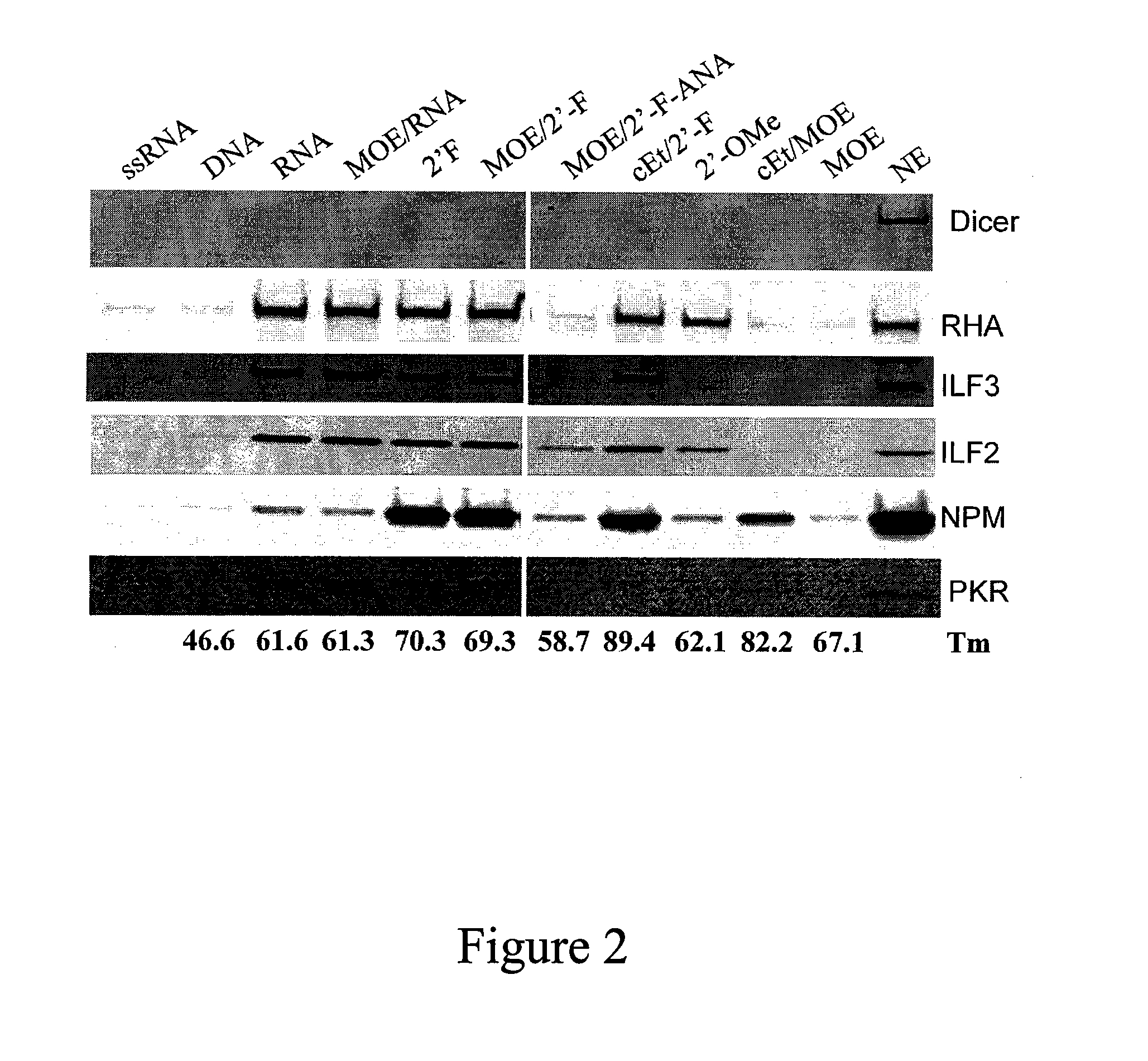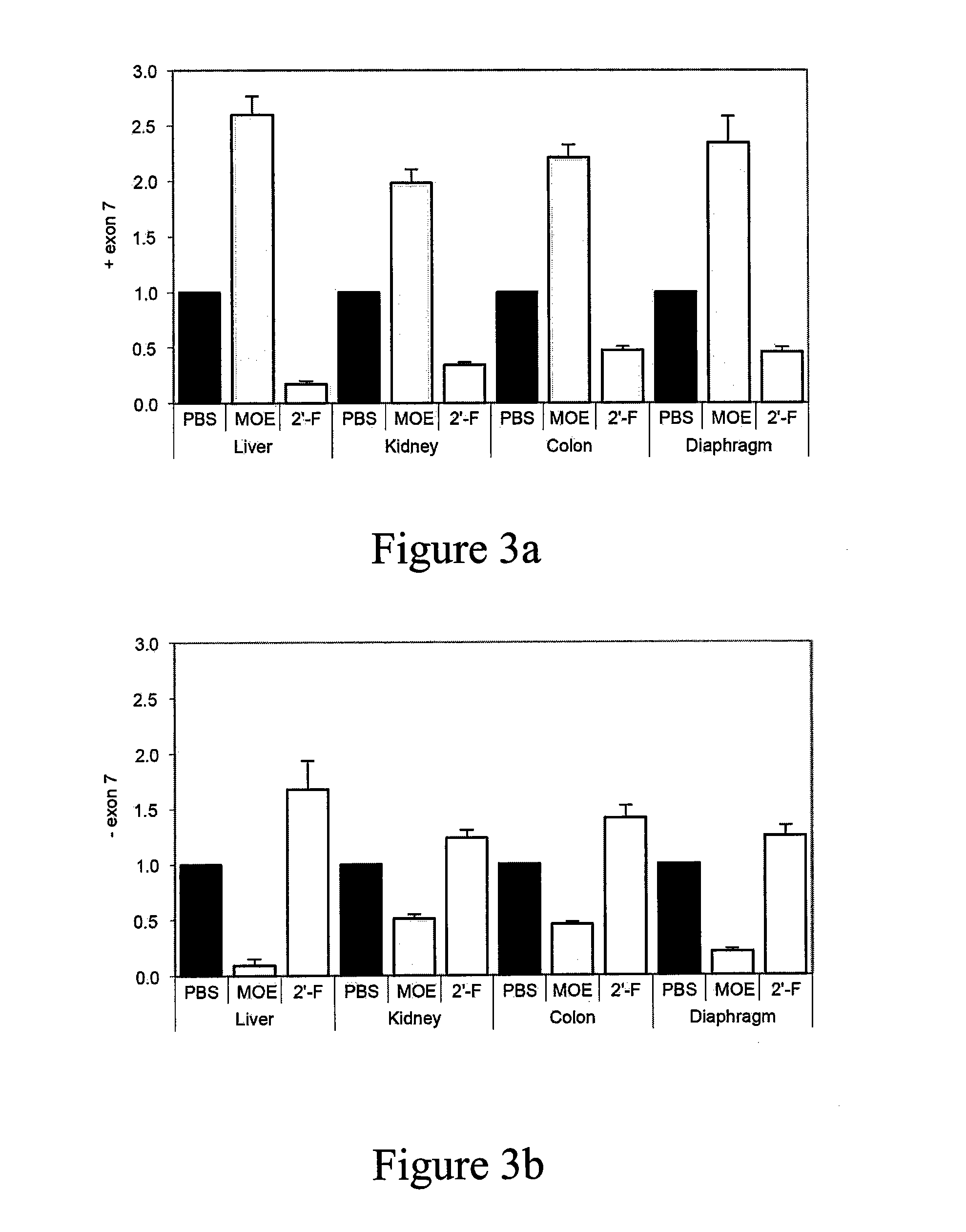Compounds and methods for modulating interaction between proteins and target nucleic acids
a technology of protein and nucleic acid, applied in the direction of muscular disorder, biochemistry apparatus and processes, drug compositions, etc., can solve the problems of cleavage of the mrna and interfere with polyadenylation
- Summary
- Abstract
- Description
- Claims
- Application Information
AI Technical Summary
Benefits of technology
Problems solved by technology
Method used
Image
Examples
example 1
Antisense Oligonucleotides Targeting Human SMN
[0262]Antisense oligonucleotides complementary to human SMN2 were synthesized using standard techniques previously described.
TargetSEQISI No.SequenceregionTSS IDID NO444477AeTeAeGeAeTeAeTeAeGeAeTeAeGeMeCeTeAeTe26943-I061216126960447440AeTeAfGfAfUfAfUfAfGfAfUfAfGfCfUfAeTe26943-I061216226960396443TeMeCeAeMeCeTeTeTeMeCeAeTeAeAeTeGeMeCeTeGeGe27062-I061216327079413147TeMeCeAfCfUfUfUfCfAfUfAfAfUfGfCfUfGeGe27062-I061216427079Subscript “e” indicates that the preceding nucleoside comprises a 2′-MOE sugar moiety.Subscript “f” indicates that the preceding nucleoside comprises a 2′-F sugar moiety.Superscript “Me” indicates a 5-methyl group on the pyrimidine base of the preceding nucleoside.All ASOs in the above table had phosphorothioate linkages (PS) throughout.
example 2
Effect of ASOs on Splicing of SMN 1 and SMN2
[0263]The antisense oligonucleotides (ASOs) from Example 1 were tested for their ability to modulate splicing of SMN1 and SMN2. HeLa cells were transfected with 30 nM of one of the ASOs with Cytofectin or were left untreated as a control for 24 hours. RNA was isolated from the cells and analyzed by RT-PCR, using standard techniques. After PCR, samples were digested by DdeI, to distinguish SMN2 from SMN1 as previously described (e.g., Hua, et al., The American Journal of Human Genetics, 82, 1-15, April 2008). The digested products were resolved on an agarose gel and visualized by ethidium bromide staining (provided as FIG. 1).
[0264]Control cells show the native splicing pattern: SMN1 is spliced to mostly include exon 7; and SMN2 is alternatively spliced resulting in some SMN2 including exon 7 and some SMN2 lacking exon 7. Cells transfected with ASOs comprising 2′MOE showed increased inclusion of exon 7 in SMN2 compared to untreated control....
example 3
Hydridization Dependence of Exon Skipping
[0265]To confirm that the observed increase in exon exclusion depended on hybridization of the antisense compound, ISIS 413147 and two mismatched controls each having the same chemistry as ISIS 413147 and having the same nucleobase composition scrambled to include 6 mismatched positions were prepared. The sequences are provided in the table below.
SEQISISIDNo.SequenceTSS IDNO447438TeTeAfGfUfUfUfAfAfUfCfAfCfGfCfUfMeCeGeI0612165447439TeMeCeAfUfUfUfGfCfUfUfCfAfUfAfCfAfGeGeI0612166413147TeMeCeAfCfUfUfUfCfAfUfAfAfUfGfCfUfGeGeI0612167Subscript “e” indicates that the preceding nucleoside comprises a 2′-MOE sugar moiety.Subscript “f” indicates that the preceding nucleoside comprises a 2′-F sugar moiety.Superscript “Me” indicates a 5-methyl group on the pyrimidine base of the preceding nucleoside.All ASOs in the above table had phosphorothioate linkages (PS) throughout.
[0266]SMA type I patient fibrorblasts (GM03814, Coriell) were transfected with incre...
PUM
| Property | Measurement | Unit |
|---|---|---|
| non-cleaving nucleic acid binding | aaaaa | aaaaa |
| size | aaaaa | aaaaa |
| nucleic acid factor | aaaaa | aaaaa |
Abstract
Description
Claims
Application Information
 Login to View More
Login to View More - R&D
- Intellectual Property
- Life Sciences
- Materials
- Tech Scout
- Unparalleled Data Quality
- Higher Quality Content
- 60% Fewer Hallucinations
Browse by: Latest US Patents, China's latest patents, Technical Efficacy Thesaurus, Application Domain, Technology Topic, Popular Technical Reports.
© 2025 PatSnap. All rights reserved.Legal|Privacy policy|Modern Slavery Act Transparency Statement|Sitemap|About US| Contact US: help@patsnap.com



